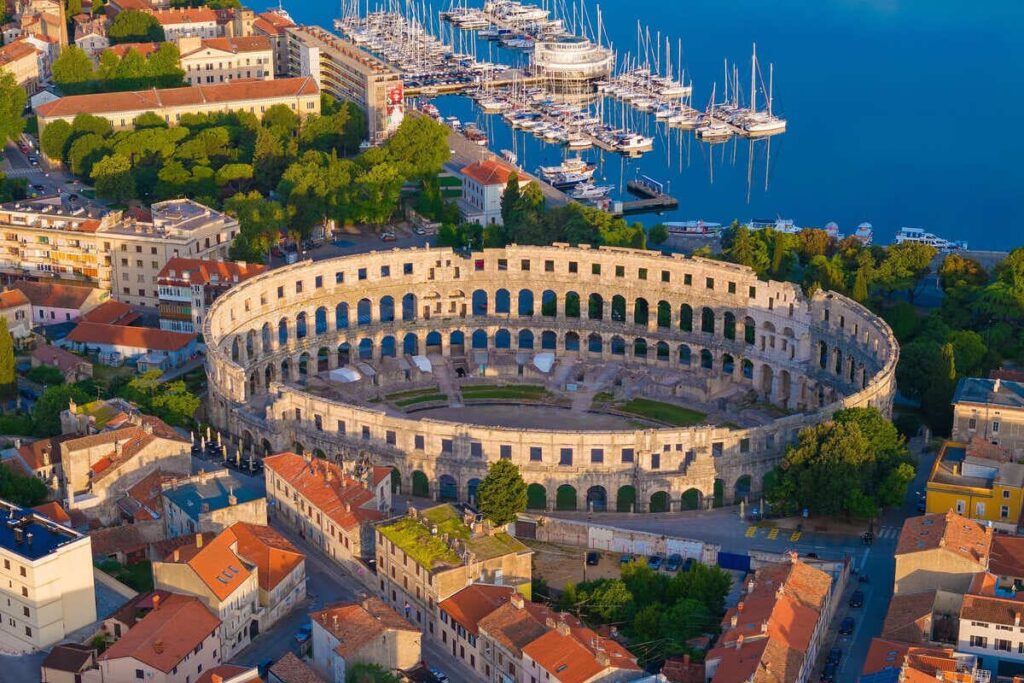Summer 2025 may already be history, but if you’ve been saving all year and are still dreaming of sun-soaked Mediterranean shores and an idyllic getaway across the pond, here’s where you can catch the last few streaks of sunshine… without the crazy crowds:
If you’re Roman Empire-obsessed, and your personal idea of fun is exploring 2,000-year-old arenas, gorging on homemade pasta, and enjoying your lemon sorbet as you stroll a scenic promenade, Pula in Croatia is where you should be headed this season.
We know, you’re probably thinking, ‘why Croatia‘ when it seems like we’ve just described somewhere in Italy.
As it turns out, Rome is not the only European gem boasting a well-preserved Colosseum and ancient heritage:

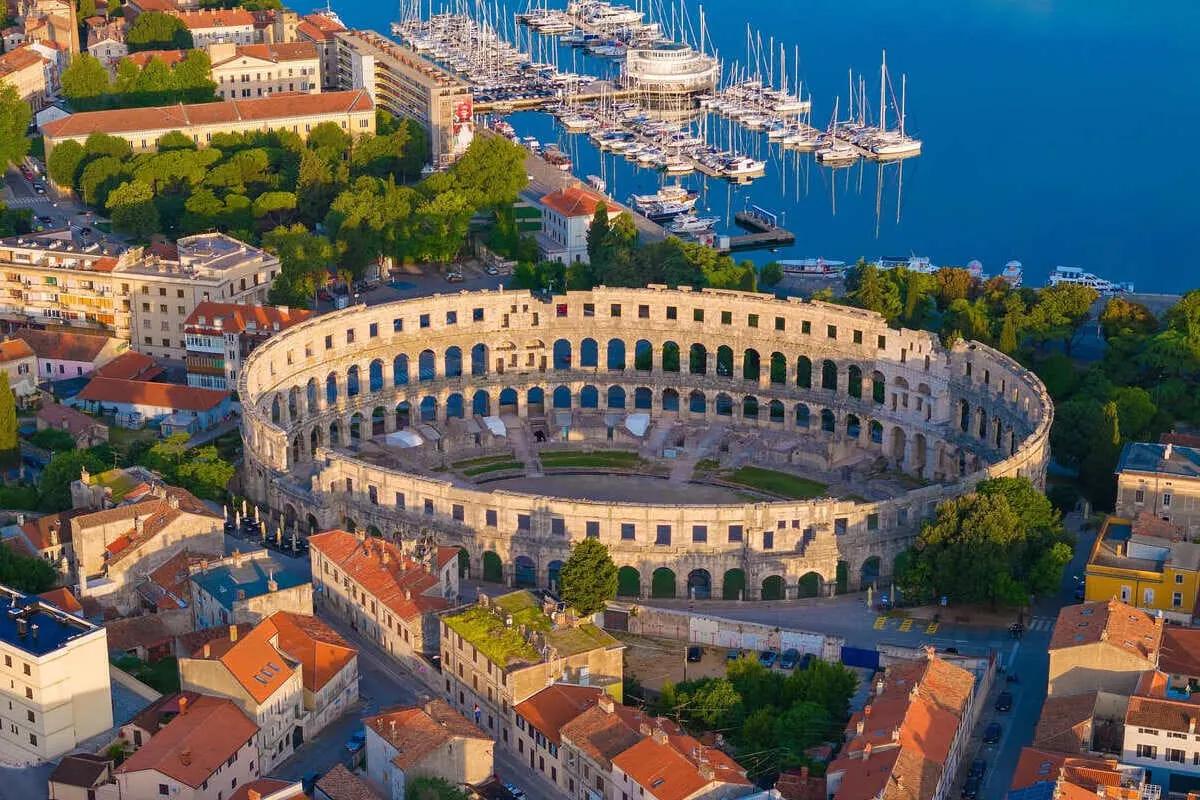
Did You Know Croatia Has A Colosseum Of Its Own?
Pula is a culture-loaded city on the tip of Croatia’s Istria Peninsula, as well as Europe’s most underrated getaway this fall.
In the words of Lonely Planet’s travel moguls, it is a ‘premier September destination‘ due to its pleasant weather, reminiscent of summer, fewer crowds, and a plethora of ancient wonders. Most notably, the imposing Pula Arena, a Colosseum look-alike, is only a few steps from the sea.
The latter are probably what you’re most interested in, if you’ve clicked on this headline.
The Pula Arena is a Roman Amphitheater built approximately 1,998 years ago, during the reign of Augustus, along the road that once connected Istria to Rome, at the heart of the empire.
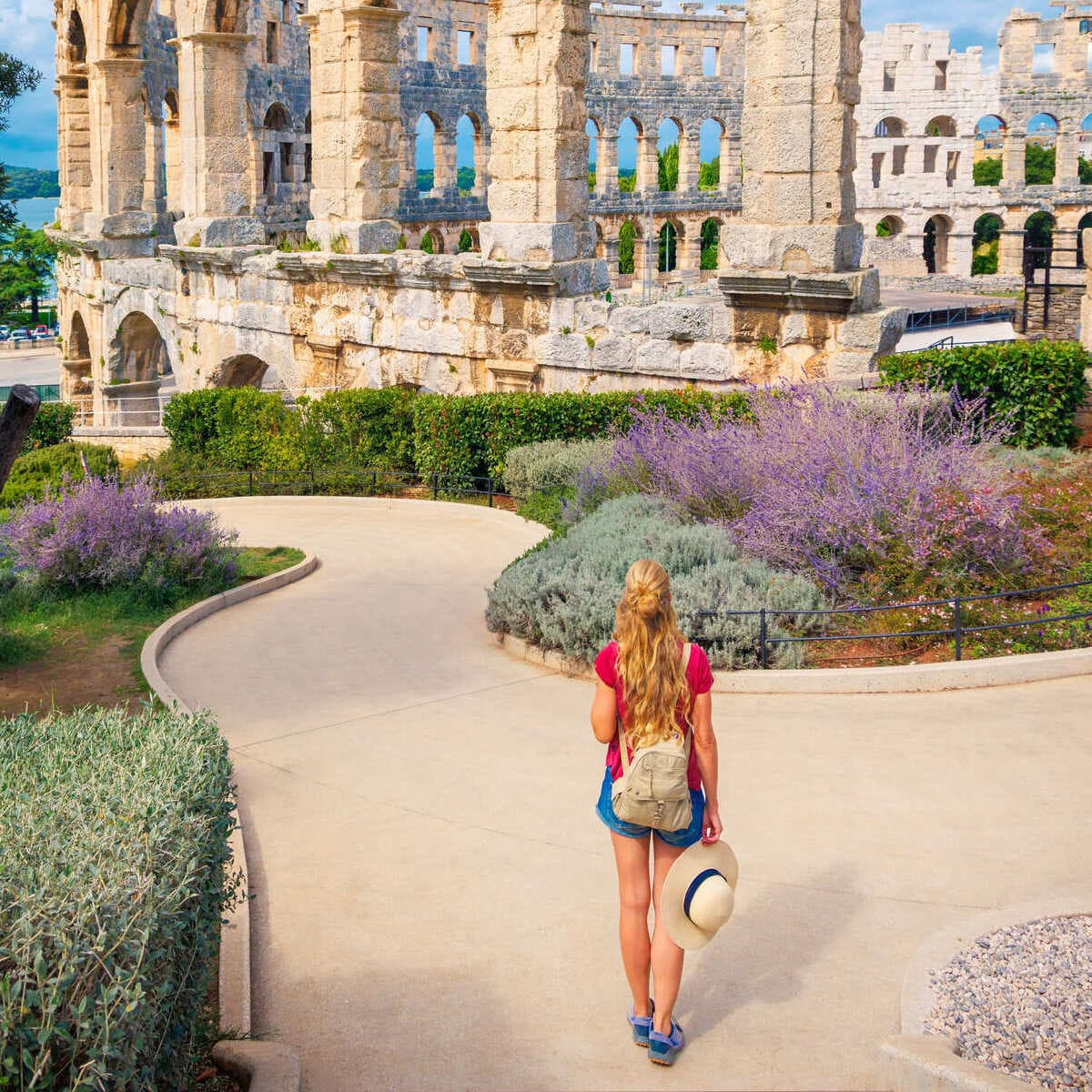

It was quite a sight then, and it is still quite the sight now.
Unlike the Colosseum, whose elliptical walls have not survived into the modern era intact, Pula’s are complete, making it one of the best-preserved structures of its kind.
Additionally, it continues to serve its purpose as a center of entertainment. Don’t worry, though: no animals or gladiators are harmed in the process. Pula’s current-day panem et circus largely involve DJ sets, electronica festivals, and Dua Lipa concerts.
Roman Ruins Galore
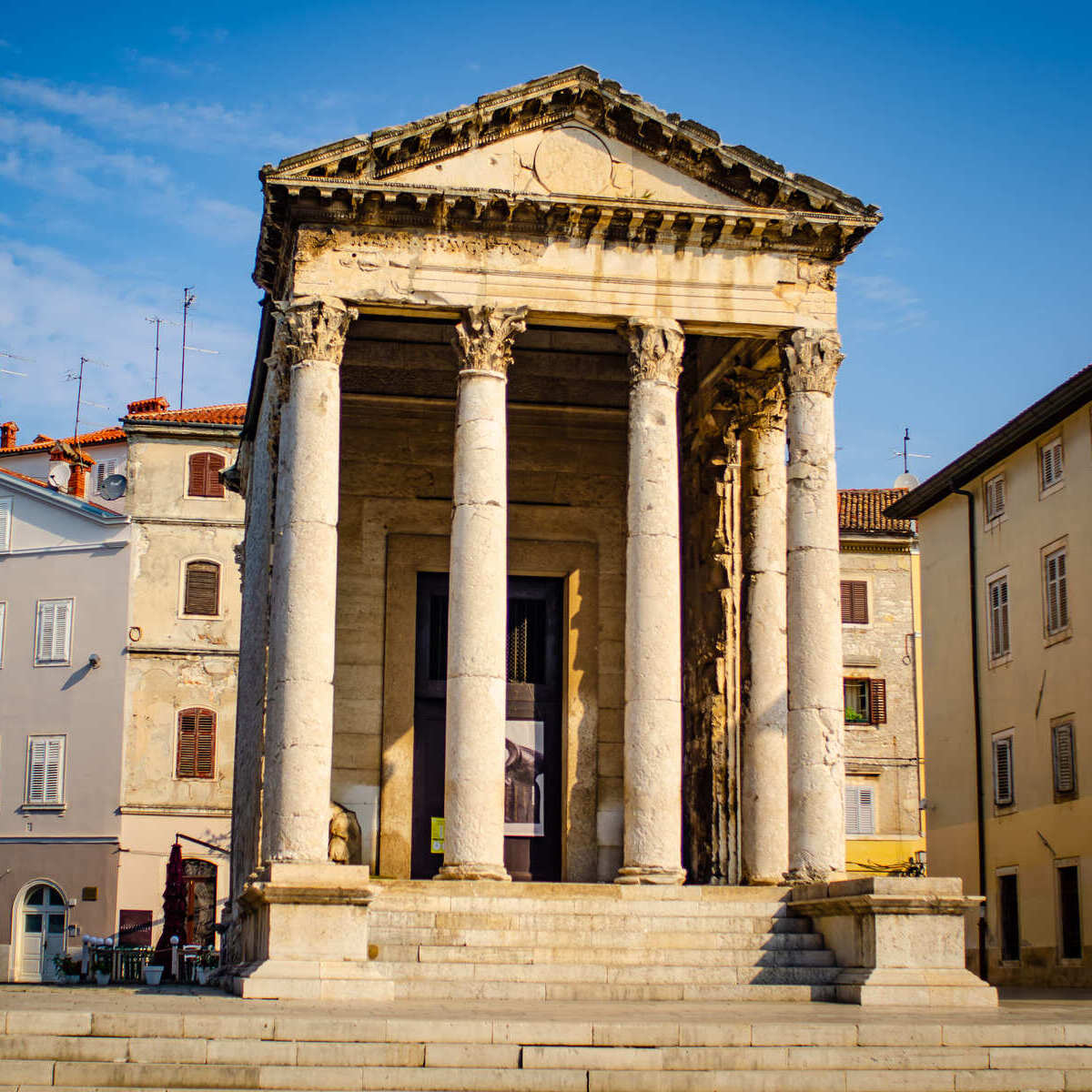

The Arena is quite impressive, alright, but it is not the only spiritual link between Pula and the Italian capital: the Old Town, or Stari Grad, is quite literally littered with Roman monuments.
You could stroll its narrow, cobblestone streets and hidden piazzettas for hours, leaving no millennia-old stone unturned, and still fail to see it all, but if you’re looking for the most emblematic sites, start with Pula Cathedral:
Best known for its free-standing, Baroque bell tower, it is built on the site of a former Roman bathhouse.
In the heart of the historic center, there also stands a virtually intact Temple of Augustus, built all the way back in the 2nd century BC, and oftentimes considered among the ‘best complete Roman monuments’ outside Italy.
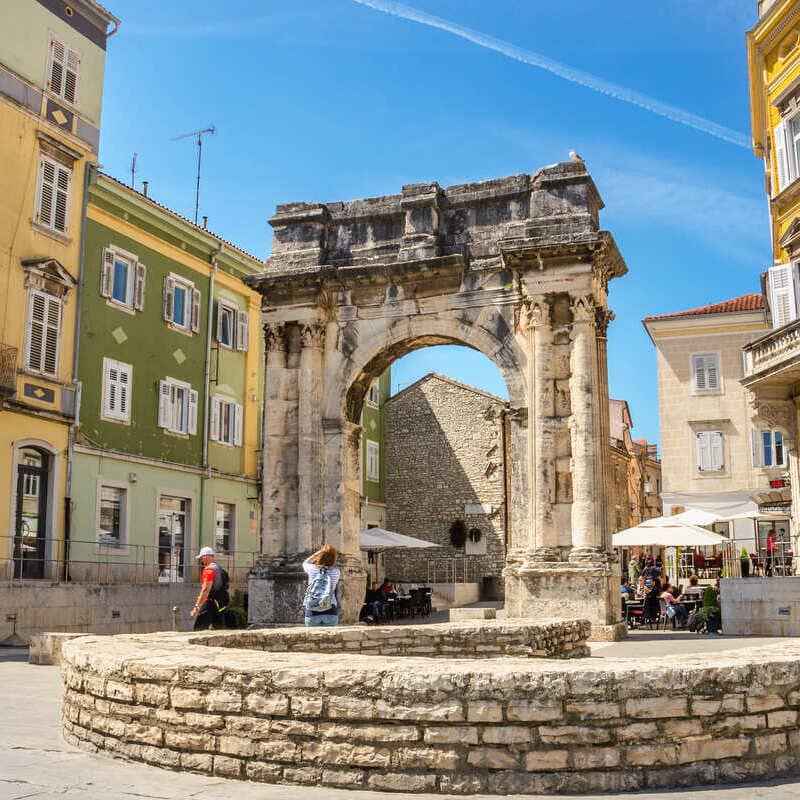

An equally-ancient triumphal arc, the Arch of the Sergii is the only-remaining structure of a once-imposing set of naval fortifications, built 29–27 BC, and solitarily guarding the entrance to the old city, Porta Gemina is the last one of Pula’s ten city gates.
Rome By The Sea
Naturally, part of Pula’s appeal is its proximity to the sea. While it’s true Rome is also close to the Mediterranean Sea, and a short train ride away from Ostia, it’s not exactly known for turquoise seas and scenic coves.
Pula has a myriad of them, starting with Valkane Beach, right in the city center. Mixing concrete areas with pebbles, the teal-colored Adriatic hugs it, and its wheelchair access, presence of lifeguards, and numerous cafés make it the most family-friendly swimming spot in town.
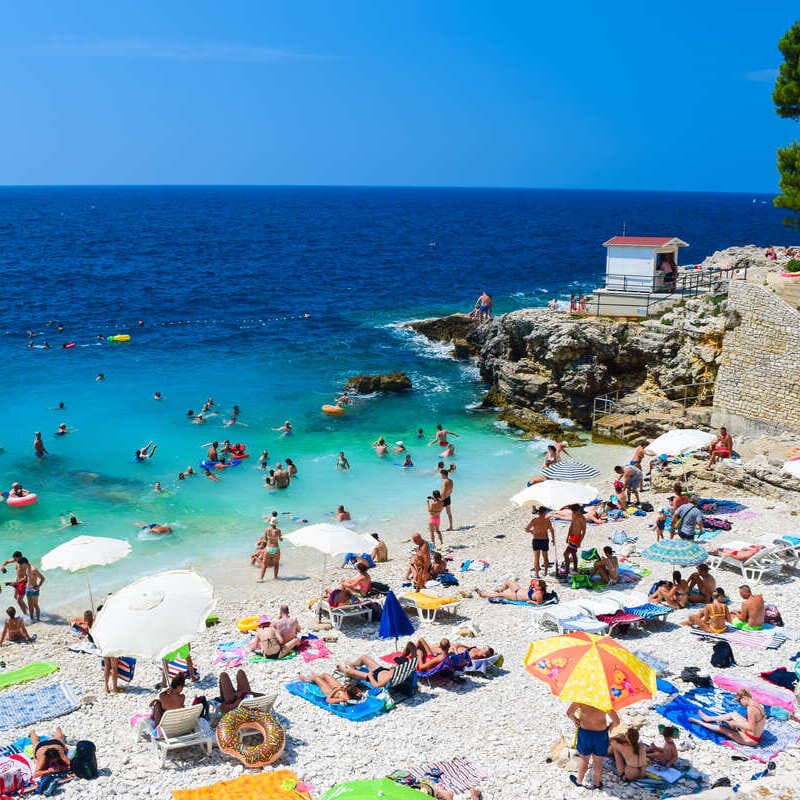

Over at Gortanova Uvala, or Gortans Beach, you’ll find smaller crowds, and a white-pebble bay backed by a lungomare (or promenade). The small cliffs tend to attract adventurous cliff-jumpers, and the beach is usually dotted with sunbathers who bring their own umbrellas.
Our third pick is Ambrela Beach, awarded Blue Flag status due to its cleanliness and wide range of tourist-friendly facilities, including snack bars and sunbeds to rent. The waters are shallow and warm, even in the fall, and this is a particularly-great beach for paddleboarding.
How Affordable Is Pula?
Croatia is no longer the ultra-affordable coastal getaway it once was, particularly after the introduction of the euro as the official currency a couple of years back.


Tourists have described it now as being as expensive as Italy or upscale parts of Greece, but you can still find great deals away from the tourist-packed Dalmatian Coast, and guess what, Pula is hundreds of miles north of the cruising hotspots of Split and Dubrovnik.
If you’re on a limited budget, but still won’t go home without sampling some of the local cuisine, you don’t need to spend over $50 in a single meal in a waterfront restaurant with a view.
Check out Plocica Cevapi, up Narodni Trg (number 9): it’s a well-known shack near the green market serving hearty meat dishes, especially the traditional Croatian ćevapi, and they usually cost under $10 (though it depends on fillings).
For pizza, Bistro Pizzeria Caruso (Gortanova 12) has daily lunch specials, with margheritas under $9, and even City Old Bar, in the heart of the historic city, has reasonably-priced meals: getting a dish of seafood spaghetti and a glass of Istrian wine will run you up under $18–20.
Either way, rest assured your tourist dollars with stretch a lot further in Pula compared to the Italian capital.
The Travel Off Path Advantage: Your Travel Toolkit
Subscribe To Our Latest Posts
Enter your email address to subscribe to Travel Off Path’s latest breaking travel news, straight to your inbox.

